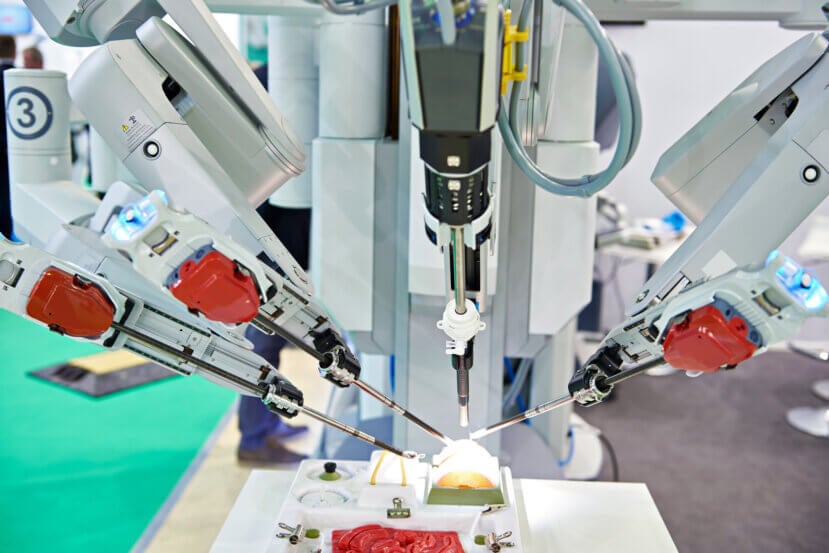High-performance healthcare can be achievable with a patient-centered approach guided by visibility solutions. In today’s healthcare environment, hospitals face the challenge of managing a complex IT infrastructure that must support a wide range of technology interfaces.
Some of the most significant challenges include:
 Innovation: Patient-centered care means having the right expertise available wherever the patient may be located. Technologies such as the Da Vinci Surgical System allow remote surgeons to operate and perform complex surgeries remotely.
Innovation: Patient-centered care means having the right expertise available wherever the patient may be located. Technologies such as the Da Vinci Surgical System allow remote surgeons to operate and perform complex surgeries remotely.- Security: Healthcare organizations must protect sensitive patient data, including medical records, personal information, and financial data, from unauthorized access or theft. As healthcare systems are digitally managed, the risk of data breaches and cyberattacks increases, making data security a top concern. For example, healthcare organizations are often top targets of ransomware and data breaches including the 2018 SingHealth data breach.
- Interoperability: Different healthcare systems and applications may use diverse data formats and protocols, making it difficult to share information and coordinate care across healthcare providers and settings. This lack of interoperability can result in errors, delays, and redundancies in care delivery.
- System Integration: Integrating disparate technologies, applications and devices is critical for healthcare organizations. However, many systems are not designed to work together, resulting in inefficiencies, data inconsistencies and difficulty in exchanging data and paralyzing hospital operations.
- Regulatory Compliance: Healthcare IT networks must comply with numerous regulatory requirements and data privacy regulations.
- Cost: Implementing and maintaining healthcare IT networks can be expensive, particularly for smaller organizations. Healthcare providers must also ensure that their networks can support the demands of the clinical setting, such as high-volume data transfer and real-time data processing. Learn more about how you can reduce costs for devices, software, cloud and network with Riverbed.
- User adoption and training: Healthcare providers and staff may resist new technology or need more skills to use it effectively. Adequate training and support are critical to ensure the optimal use of technology.
The role of IT in managing change
Implementing and managing healthcare tech is an IT job, but the planning process calls for collaboration with clinical leaders to ensure optimal care delivery when and where needed. Investing in appropriate resources, including people, processes, and technology, is vital to providing exceptional patient experiences. To keep up with these changes, hospitals need to invest in building futuristic architectures that can support technological advances to enhance patient experience, empower healthcare workforce, and streamline operations.
End-to-end network visibility to harmonize healthcare IT
New-age healthcare tech such as heart monitors, biosensors, oximeters, BP monitors, etc. and the ability to view health reports online can help promote real-time collaboration and consultation with colleagues and specialists during hospital rounds or practice hours, from clinics in regional areas, or whenever and wherever needed. The benefits are not limited to accessing patient records and improving patient care. It can significantly help manage daily hospital operations such as staff rostering, equipment sterilization, bookings for surgeries, and more. However, these devices increase the load on the hospitals’ LAN and WiFi network.
For the successful integration of technologies to enable communication, it’s crucial to have a dependable underlying network that supports them. To achieve this, IT teams need comprehensive end-to-end network visibility to keep all the applications connected.
Addressing challenges associated with new-age healthcare tech
Substantial use of IT heightens the risk of a data breach. Managing various endpoints, including mobile users, medical devices, and applications, is complex—bring your own device (BYOD) could add to the complexity. An increase in the number of devices can also strain the infrastructure, bandwidth and IT resources.
Hospitals can deploy tools such as Aternity Digital Experience Management (DEM) to address these challenges. Aternity DEM is a comprehensive platform that captures and stores technical telemetry from desktop and mobile endpoint devices. It enables IT teams to gain better visibility into the actual user experience and device performance, which can inform decisions on device replacement based on performance and help identify and eliminate redundant or underused software licenses. By curtailing shadow IT, IT teams can manage software usage more effectively, identify and eliminate wasteful solutions and utilize budgets more efficiently.
The Riverbed NetProfiler proved to be incredibly valuable for monitoring the complex hospital network, which requires constant communication between internal and external endpoints. With end-to-end network monitoring and visibility, the hospital can manage information flow, monitor patient health in real time, process insurance claims, maintain medical records, and improve overall operations.
The Riverbed AppResponse enables the hospital to monitor and analyze network-based application performance, allowing them to quickly resolve issues to avoid disruptions in daily operations. The Riverbed NetIM maps application network paths, providing granular-level monitoring and troubleshooting of the IT infrastructure. This mapping is particularly crucial in a hospital setting, where staff across various functions tend to use different applications. Lastly, the Riverbed Portal provides integrated network and application insights, enabling the hospital to gain control of their network and ensure that their IT systems are functioning properly.
Invest in operational excellence
In conclusion, end-to-end network visibility unleashes the hidden aspects of the healthcare ecosystem, allowing caregivers to deliver high-quality and personalized patient care. To keep up with these advances, hospitals can invest in adding futuristic tools and applications supported by a high-performance network to enhance patient experience and operational excellence. Learn how to get more out of your IT budget with Aternity DEM before you plan to integrate new technologies to your healthcare setup’s IT stack.
